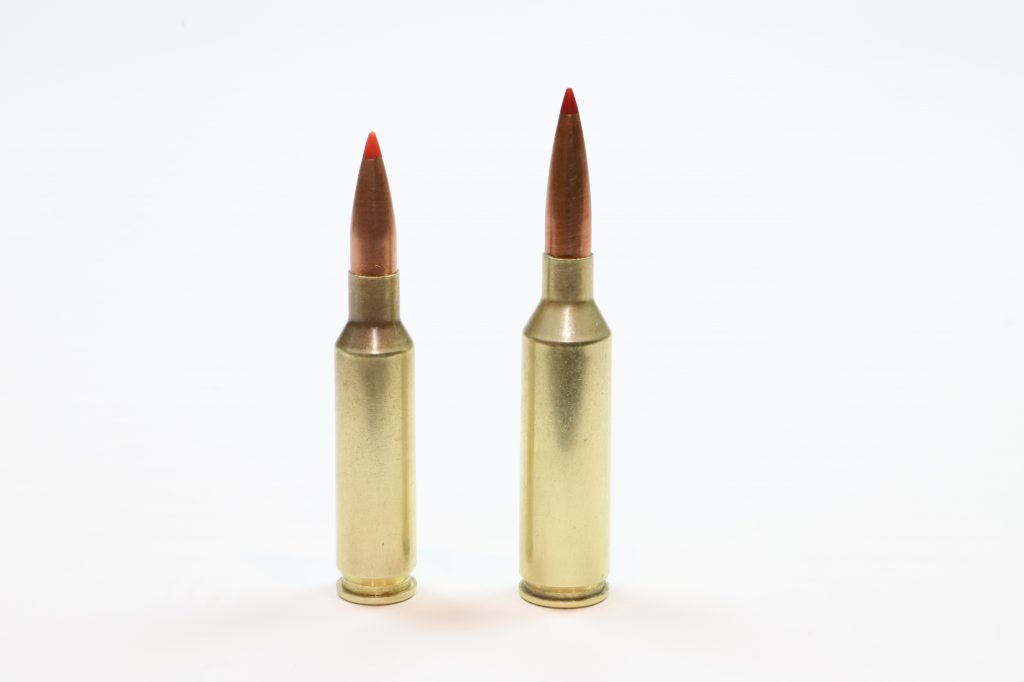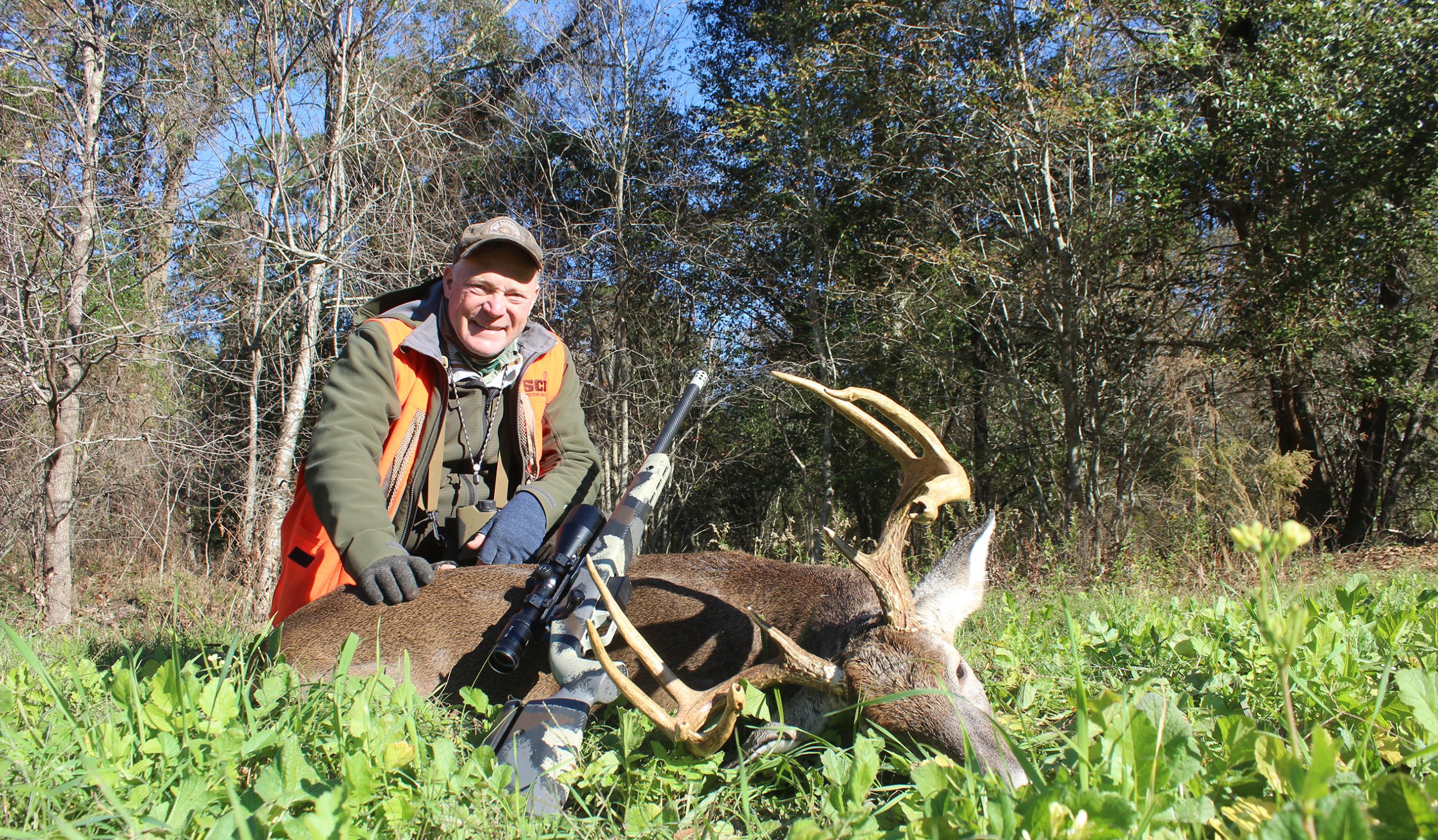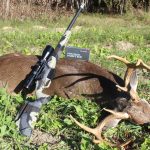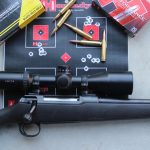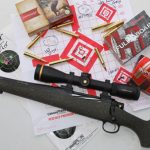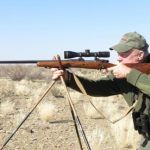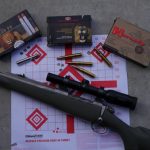Which is better: Creedmoor or PRC?
Photo above: This Georgia whitetail is the first animal Boddington has taken with a 6.5mm PRC. The rifle is a Springfield Waypoint test rifle that had to be returned, but Boddington was impressed enough by both rifle and cartridge that he’s ordered one.
The success of Hornady’s 6.5mm Creedmoor cartridge is the most amazing phenomenon I’ve seen in my career. It’s an efficient and mild-kicking cartridge with modern case design, but here’s the fascinating thing: When it was brought out in 2007, its current popularity wasn’t expected.
Hornady saw it as a long-range target cartridge. Taking advantage of the 6.5mm’s bullet aerodynamics, it remains supersonic to ‘way out there. Based on a shortened .308 Winchester (or .30 TC) case, it can use those long bullets in short bolt-actions. Obviously, it has hunting applications but, since it was designed as a target cartridge, initial expectations were modest, and the introduction was fairly quiet. The 6.5mm Creedmoor soon started winning matches but sales languished along for several years…as anticipated.
Even the Hornady folks are a bit confused as to what happened; if done purposefully through effective marketing you’d want to bottle and sell it, but there’s no formula: About 2013, the 6.5 Creedmoor took off…seemingly all by itself, and its momentum continues. Plenty of folks already have one, and everybody else wants one. All suitable platforms are chambered to it, and factory loads continue to expand.
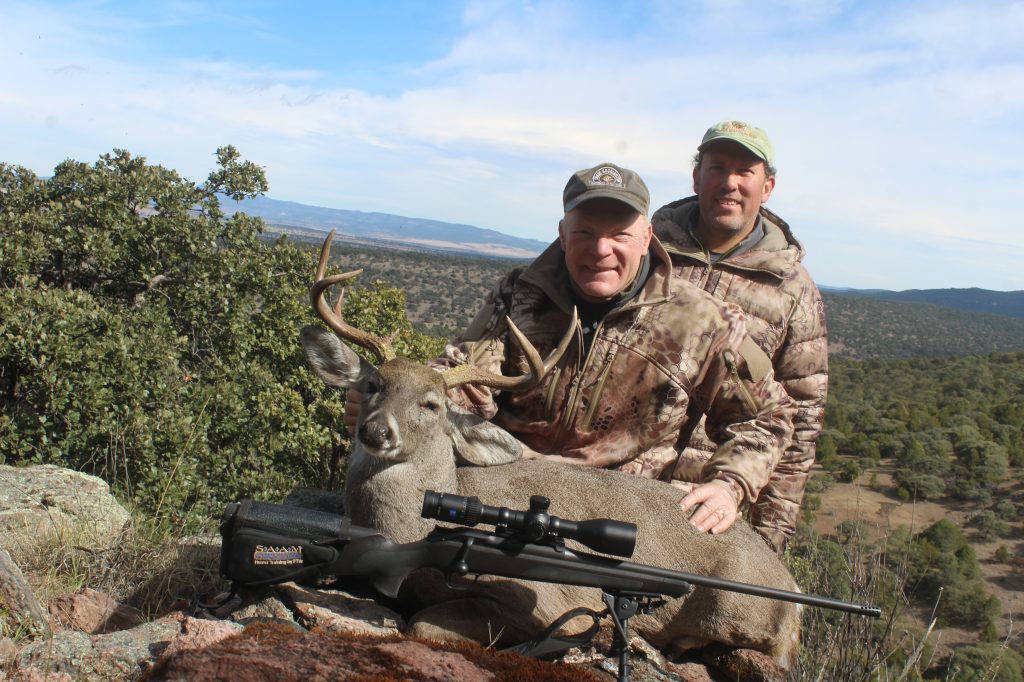
Very little about the Creedmoor is new. I’ve often suggested that the Creedmoor can’t do anything the 6.5×55 couldn’t do before 1900. This is almost true, but the Creedmoor has definite advantages over the 6.5×55: Its short (1.920-inch) case can handle long bullets in a short action. And, thanks to its rapid popularity, it is much more available in the U.S.
The Creedmoor’s advantages over the .260 Remington aren’t as clear. Introduced in 1997, the .260 Remington is based on the .308 Winchester case necked down to take a 6.5mm bullet. I jumped on the .260 bandwagon early; both my daughters took their first game with .260 Remington rifles. The .260 has not become wildly popular, but it is almost ballistically identical to the Creedmoor. In short actions, the Creedmoor does better with long bullets, but the .260 has more case capacity and can be loaded a bit faster.
Arguments can be made either way about which is “better,” but they’re too close to call. With the most case capacity, the 6.5×55 could be faster than either the Creedmoor or .260, but 6.5×55 factory ammo is loaded to lower pressure, and reloading manuals hold the 6.5×55 to lower limits. Loads (and loaders) vary, but we can say that the 6.5×55, .260 Remington, and Creedmoor are similar, propelling a 140-grain bullet at around 2700 fps, and yielding about 2300 ft-lbs of energy at the muzzle.
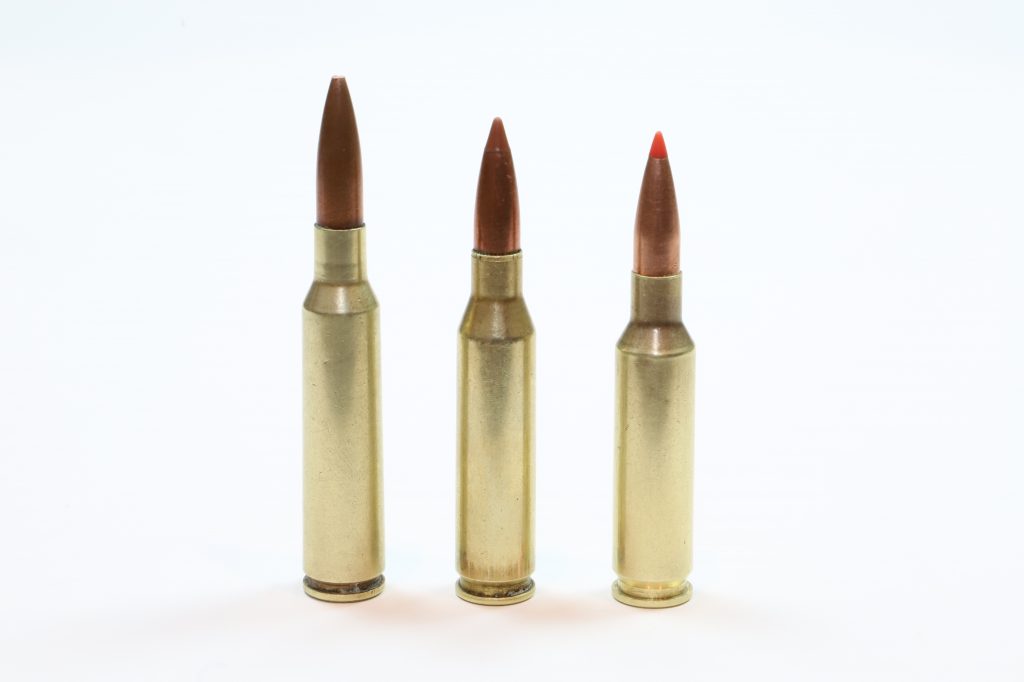
The Creedmoor has made American shooters aware of long-available 6.5mm magic. At a modest 2700 fps muzzle velocity, an aerodynamic 6.5mm bullet can remain supersonic well beyond 1200 yards, achieving this with mild recoil and little blast. The Creedmoor tends to be accurate, thus it really is an ideal long-range target cartridge, and obviously excellent for deer-sized game. However, it is minimal for game larger than deer; and it is not an ideal long-range hunting cartridge. Thanks to its rapid popularity, too many of us seem to have imparted near-mystical powers to the Creedmoor, touting its suitability for elk-sized game at extreme range.
On deer-sized game, the Creedmoor has sensible capability to around 400 yards. At closer ranges, it is elk-capable, but it lacks the velocity and energy for large game at long range. The Creedmoor erased the “curse of the 6.5mm” that spelled failure for all American 6.5mm cartridges up to and including the .260 Remington. We have finally embraced the .26-caliber and accepted the advantages of its long, aerodynamic projectiles. We have more and better bullets, and more 6.5mm cartridges to choose from.
In 2013, the 26 Nosler was the first of Nosler’s growing family of fast, large-cased, unbelted cartridges. Weatherby’s belted 6.5-.300 Weatherby Magnum (2016) is even faster. I took a monstrous ibex in eastern Turkey when the 26 Nosler was new, and I have a 6.5-.300. Few cartridges shoot as flat but, although my 6.5-.300 is very accurate, I view the two super-fast 6.5mms as almost too much of a good thing. They are over bore capacity, limiting suitable propellants, and reducing barrel life. They need long barrels, and I wouldn’t describe them as “mild” in blast or recoil!
There are other options, offering flatter trajectories than the “Creedmoor class,” and delivering more velocity and energy. I previously described this as the “6.5mm sweet spot.” There’s no magic in any particular number, but it seems to make a big difference in performance on game if you can get a 140-grain 6.5mm bullet up to about 3000 fps. Flattening of the trajectory isn’t so significant but the additional energy matters, especially on game larger and tougher than deer. A 140-grain bullet at 3000 fps delivers 2800 ft-lbs of energy, nearly a 20 percent increase over the Creedmoor.
Cartridges in this class include the 6.5-06, an old and fairly common wildcat; the 6.5-.284 Norma, loaded by Norma since 1999; and the old .264 Winchester Magnum, dating to 1958. All have some following. I saw my old friend Ron Mostyn the other day and asked if he was still using his 6.5-.284. He replied with a grin: “Best cartridge ever.” Montana outfitter Ryan Counts has a 6.5-06 that he swears by for coyotes and wolves at long range. And, with no apologies, I cling to my .264.
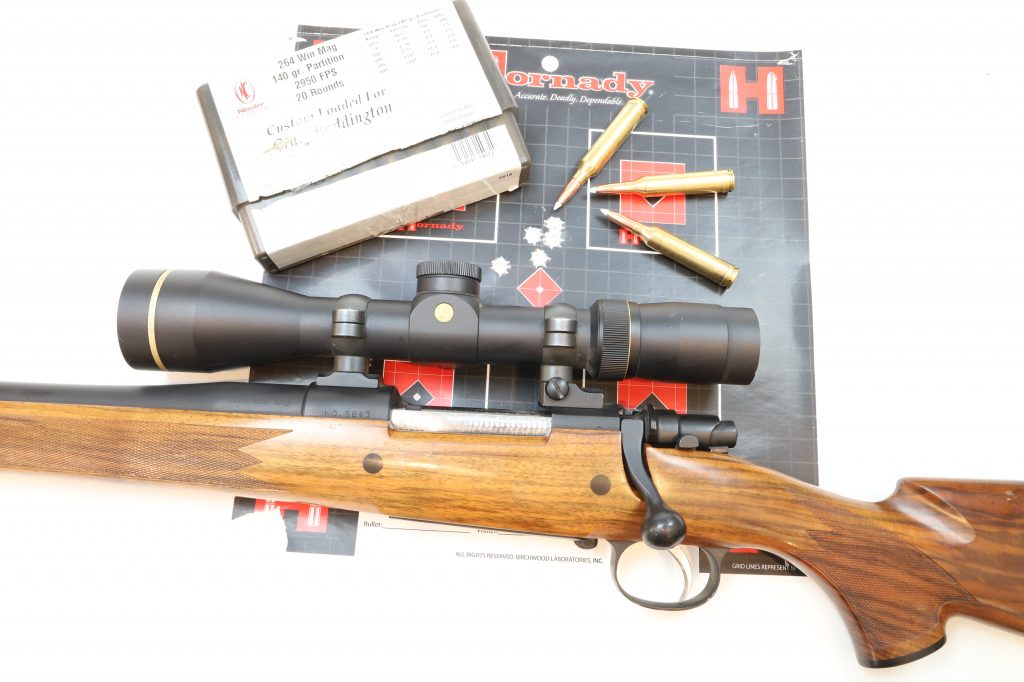
My .264 is a nice rifle that shoots well so I have no reason to abandon it. However, based primarily on sheer availability, the fast 6.5mm that seems to make the most sense is the 6.5mm Precision Rifle Cartridge (PRC). Another Hornady design, the PRC case is based on the .300 Ruger Compact Magnum case (or, if you prefer, a shortened .375 Ruger case). It is thus unbelted, but uses the same .532-inch rim diameter as most belted magnums. Depending on bullet length and seating depth, the stubby 2.030-inch case is better in short actions than the 6.5-.284 Norma. With 6.5mm bullets getting longer (and more aerodynamic), a lot of folks are putting the 6.5mm PRC in standard (.30-06-length) rather than short-actions, eliminating any concern about cartridge overall length. The efficiency of the short, fat case reduces much of the over bore capacity issues long common to fast 6.5mms. Barrel life will be a bit better; if I ever shoot out the barrel on my .264, it will become a PRC.
As currently loaded by Hornady, a 143-grain ELD-X is rated at 2960 fps. That’s a bit short of my goal of 3000 fps, but close enough. Also in the ballpark is Weatherby’s 6.5mm Rebated Precision Magnum (RPM). Based on a lengthened .284 Winchester (or 6.5-.284) case, ballistics are much the same, with a 140-grain bullet at 2975 fps. I doubt the 6.5mm PRC will ever approach the Creedmoor’s availability and popularity, but it’s catching on fast, with multiple (and expanding) sources for ammo and brass, while Weatherby remains the primary source for their 6.5mm RPM.
So, if you’ve stepped out of your cave and into the sunlight with a sudden craving for a 6.5mm rifle, I think the primary choices are the Creedmoor and the PRC. I love to champion old classics (like the 6.5×55 and .264) but, these days, availability matters more than ever. Few cartridges equal the Creedmoor’s availability. The PRC won’t catch up, but is easily the most available of the faster 6.5s, and is increasing in popularity.
Which of the two is best for you depends largely on what you intend to do. If you’re a target shooter, the choice is easy. The Creedmoor is a cartridge you can shoot all day and call it fun. If you’re a normal deer hunter, your answer might be just as simple: The Creedmoor is plenty of gun for any deer-sized critter…out to the normal ranges that most of us shoot.
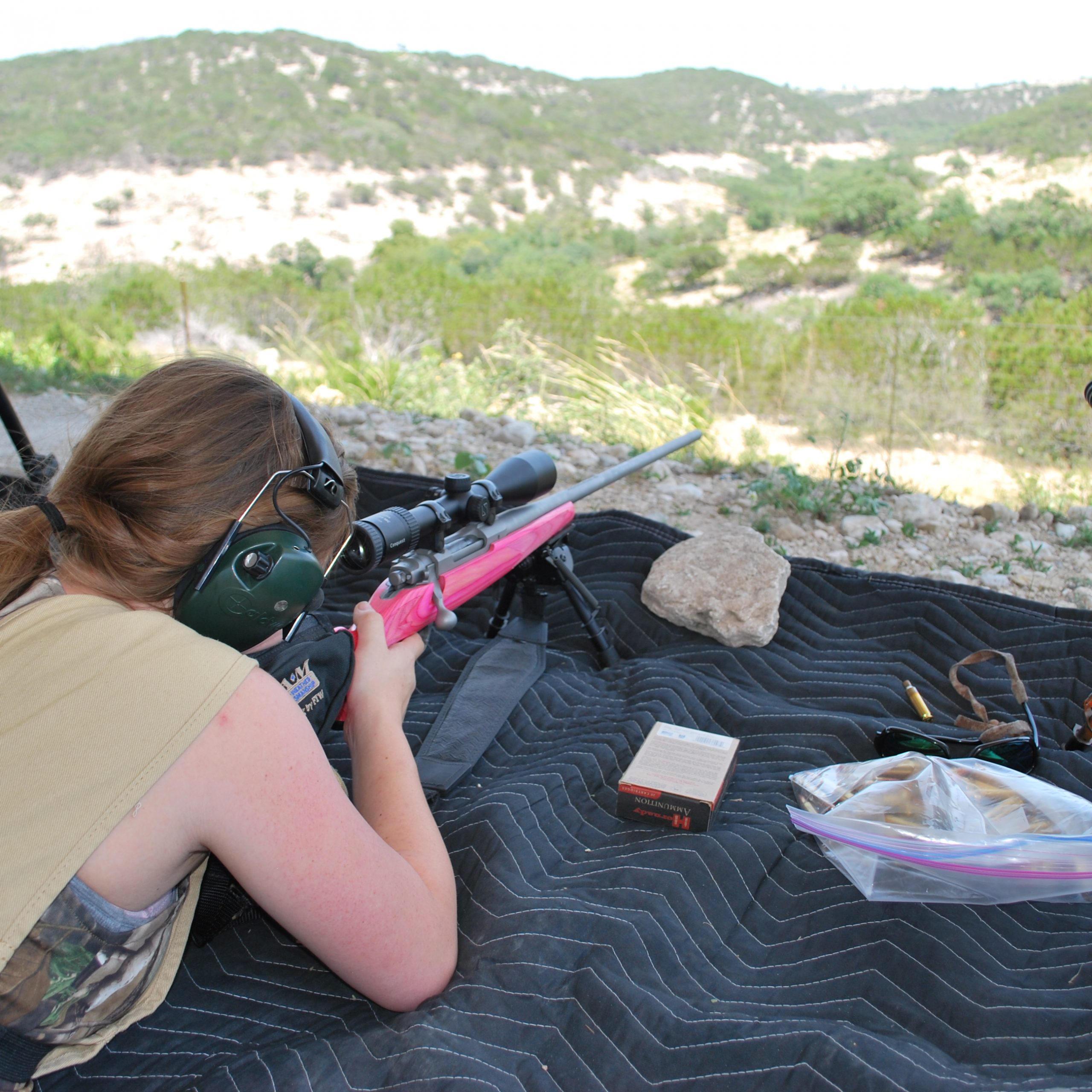
But, suppose you also hunt elk. Or, you’re a mountain hunter where the stakes are high and shots are unpredictable. Or, you’re an African hunter with a wide variety of plains game on the menu. Or, you’re an extreme-range shooter. You might want to up your game a bit and consider the PRC instead of the Creedmoor!
When you add 250 to 300 fps velocity you will feel the difference on your shoulder and in the muzzle blast. The PRC isn’t as much fun to shoot as the Creedmoor, but it’s not a hard-kicking cartridge. The difference in performance and versatility is significant, and the short, fat, modern case is conducive to accuracy. I am often not first in line to embrace new cartridges, but I have a Mossberg Patriot in 6.5mm Creedmoor that I’m happy with, fine for deer and hogs at medium range. For anything really serious I want more gun, and I’m impressed by the 6.5 PRC. I’m not going to retire my .264, but I’ve got a Springfield Waypoint in 6.5 PRC on order.
